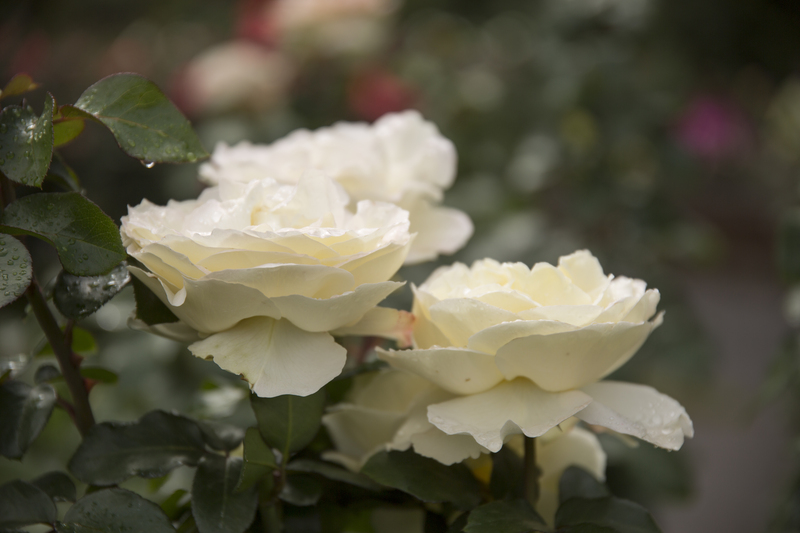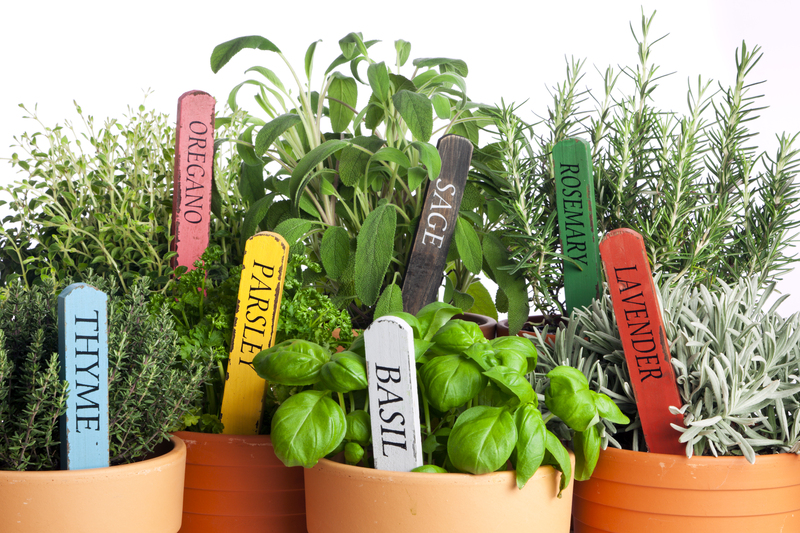Caring for Orchids: The Complete Manual
Posted on 21/05/2025
Caring for Orchids: The Complete Manual
Orchids are exquisite and captivating plants sought after by plant enthusiasts worldwide. Their unique blossoms, fascinating variety, and sometimes mysterious care requirements make them both alluring and challenging. Whether you're just starting your orchid journey or looking to elevate your expertise, this complete guide to orchid care provides everything you need to grow healthy, thriving, and beautiful orchids at home.
Understanding Orchids: Beauty and Diversity
Orchids belong to one of the largest plant families on earth, with over 25,000 species and more than 100,000 hybrids. They inhabit nearly every continent, displaying extraordinary adaptations in foliage, roots, and flowers. The most commonly kept types by home growers include Phalaenopsis (moth orchid), Dendrobium, Cattleya, Oncidium, and Paphiopedilum (lady's slipper orchid).
- Phalaenopsis (Moth Orchid): Easy for beginners, produces long-lasting blooms.
- Dendrobium: Known for their tall canes and striking flowers.
- Cattleya: Famous for spectacular, fragrant blooms.
- Oncidium: Nicknamed "dancing lady" due to their petal shapes.
- Paphiopedilum: Recognized by pouch-like flowers; prefer low light.
Understanding your orchid's natural habitat is the first step toward providing proper care. Most orchids are epiphytes, which means they grow on trees and absorb nutrients and moisture from the air and rain rather than soil.

The Fundamental Factors of Orchid Care
To successfully care for orchids, pay close attention to the following essentials:
1. Light: The Key to Lush Growth
Orchids thrive in bright but indirect sunlight. Too little light results in scanty blooms or no blooms at all, while too much can scorch the leaves. To find the perfect location:
- Place orchids near an east-facing window for gentle morning light.
- Filter strong southern or western light with sheer curtains.
- Avoid direct midday sun to prevent burning.
Signs of Correct Lighting:
- Healthy orchids have light to medium green leaves.
- Yellowish leaves suggest too much light.
- Dark green, floppy leaves signal insufficient light.
2. Water: Achieving the Perfect Balance
*Watering orchids* is a balance between too little and too much. Since most orchids are epiphytes, their roots are adapted to dry out between waterings. Overwatering is the most common mistake--leading to root rot and orchid decline.
- Water thoroughly but infrequently--typically once a week for most homes.
- Allow the potting medium to dry slightly before the next watering.
- Use room-temperature, non-chlorinated water for best results.
- For orchids in transparent pots, check roots; silvery roots need water, green means they are hydrated.
Quick tip: Always empty drainage trays to prevent roots from sitting in water.
3. Humidity: Creating a Tropical Retreat
Orchids are native to humid, tropical climates. Aim for humidity levels between 40-70% for healthy orchid development. Here's how:
- Group your plants together to boost local humidity.
- Use a humidity tray filled with water and pebbles beneath the pots.
- Mist leaves occasionally, preferably in the morning.
- Invest in a small humidifier if your climate is especially dry.
4. Temperature: Replicating Nature's Rhythms
Most orchids do well in typical home temperatures, but consistency is crucial:
- Daytime temperatures: 70-80?F (21-27?C)
- Nighttime temperatures: 60-70?F (15-21?C)
Pro Tip: A slight nighttime drop in temperature can trigger blooming in many species.
5. Potting Medium and Repotting
Forget typical potting soil--the best potting medium for orchids is a fast-draining, chunky mix that mimics their natural environment.
- Common media: Bark, sphagnum moss, perlite, coconut husk.
- Repot every 1-2 years: To refresh nutrients and avoid compaction.
How to Repot:
- Gently remove the orchid and rinse off old potting mix.
- Trim any dead or rotted roots.
- Place in a new pot with fresh medium and water thoroughly.
Feeding Orchids: Fertilization Secrets
Orchids need nutrients to bloom well but are sensitive to over-fertilization. Use a balanced, water-soluble orchid fertilizer and follow these principles:
- Apply at half strength every two weeks during active growth.
- Flush with plain water monthly to remove salt build-up.
- Do not fertilize when orchids are dormant or right after repotting.
Look for fertilizers specifically labeled for orchids, containing a balanced ratio of nitrogen, phosphorus, and potassium (e.g., 20-20-20).
Orchid Flowering: Maximizing Beautiful Blooms
Getting orchids to rebloom is a reward for proper care. Here are tips to encourage profuse flowering:
- Ensure enough light: Up the brightness if your orchid has not flowered in over a year.
- Respect the cooling period: Many orchids (like Phalaenopsis) require a drop in temperature to bloom.
- Stick to proper feeding routines as outlined above.
- Keep stress minimal: Avoid moving or repotting during budding.
After Blooming Care
What you do after flowers fade can encourage new blooms. For Phalaenopsis orchids:
- Trim the spent flower spike just above the node (joint) to encourage a side shoot.
- If the spike turns brown, cut it off near the base.
Common Orchid Problems & How to Solve Them
*Even experienced growers* encounter challenges with orchid care. Here are some typical issues and solutions:
- Yellowing Leaves: Usually from overwatering or direct sunlight. Adjust your routine as needed.
- Wrinkled Leaves: Indicates dehydration--check root health and increase watering.
- Leaf Spots or Rot: Often a sign of fungal or bacterial infection. Remove affected areas, improve airflow, and avoid wetting the foliage.
- No Blooms: Increase light or introduce a nighttime temperature drop to trigger the next bloom cycle.
Pest Management
Orchids may attract pests like mealybugs, scale, or spider mites. Combat infestations with:
- Washing leaves with mild soapy water.
- Using neem oil or horticultural oil sprays.
- Isolating affected plants to prevent spread.
Advanced Orchid Care: For the Dedicated Enthusiast
Mounting Orchids
Some species thrive best when mounted on cork bark, wood, or tree fern fiber, mimicking their native growth in the wild. This technique is visually striking but requires higher humidity and daily misting.
Propagation Techniques
Orchids can be propagated by division, backbulbs, keikis (baby orchids that sprout on stems), or seed. Division is safest and most practical for beginners. Simply separate offshoots with roots when repotting.
Seasonal Tips for Year-Round Orchid Health
- Winter: Reduce watering, monitor for cold drafts, and keep away from heaters.
- Spring/Summer: Increase water, feed regularly, and check for pests.
- Autumn: Prepare for reduced light and cooler temperatures--some species begin their blooming cycle now.

Frequently Asked Questions About Caring for Orchids
Q: How often should I mist my orchid?
A: Mist orchids a few times weekly if humidity is low, always in the morning to allow leaves to dry.
Q: Do orchids need to be fertilized year-round?
A: No, pause fertilization during the dormant season and after repotting.
Q: Why are my orchid's roots growing outside the pot?
A: These are called aerial roots. They absorb moisture and nutrients from the air--don't cut them off; instead, mist occasionally.
Caring for Orchids: In Summary
Caring for orchids is both an art and a science that begins with understanding your plant's needs. By mastering their requirements for light, water, humidity, temperature, potting medium, and feeding, you'll unlock years of glorious blooms and spectacular growth. Each type of orchid brings its own joy and challenge, but patience and careful observation are always rewarded.
Whether you're caring for a single moth orchid on your windowsill or curating an extensive collection, this complete guide to caring for orchids will help you become a nurturing and knowledgeable orchid grower. Enjoy the process, delight in their rare beauty, and share your passion with fellow enthusiasts!
Happy orchid growing!

